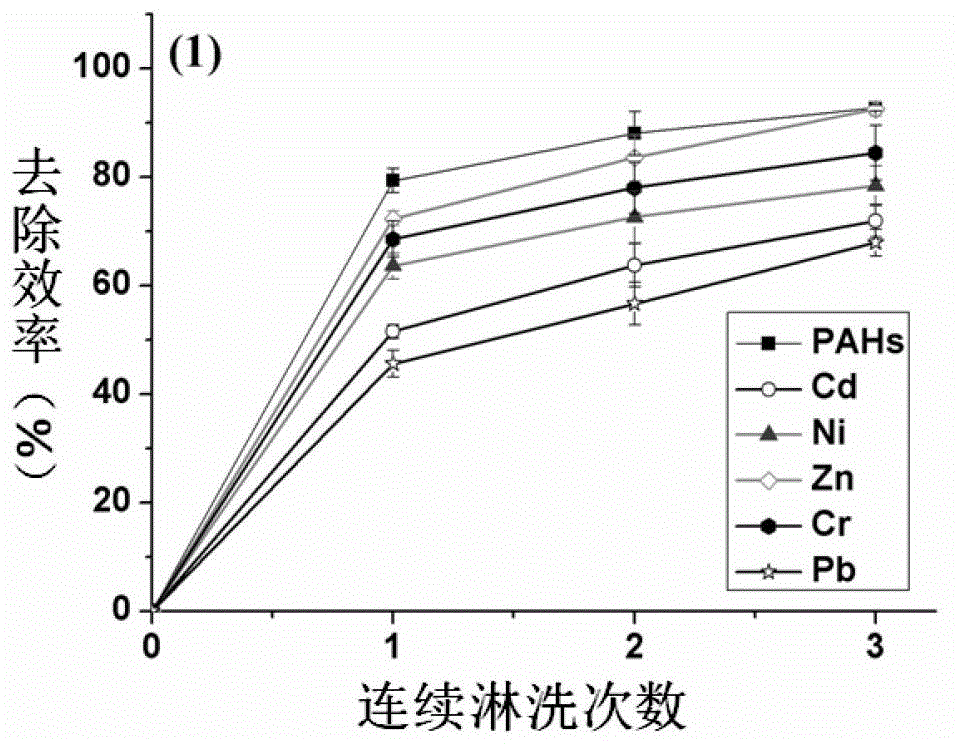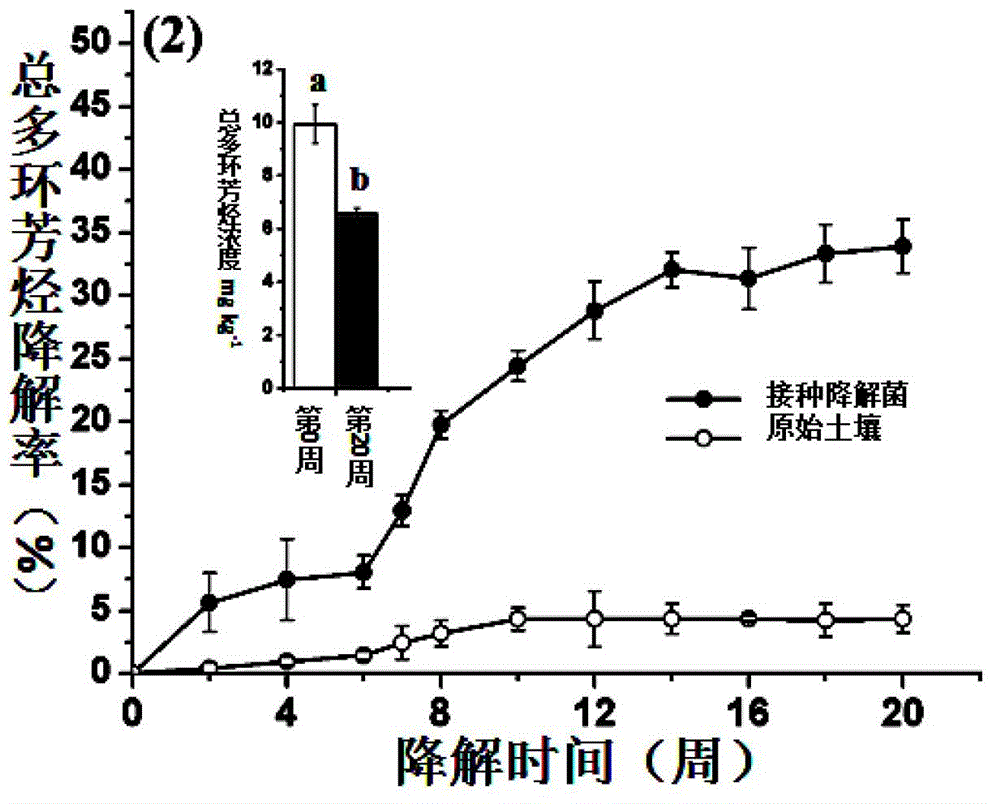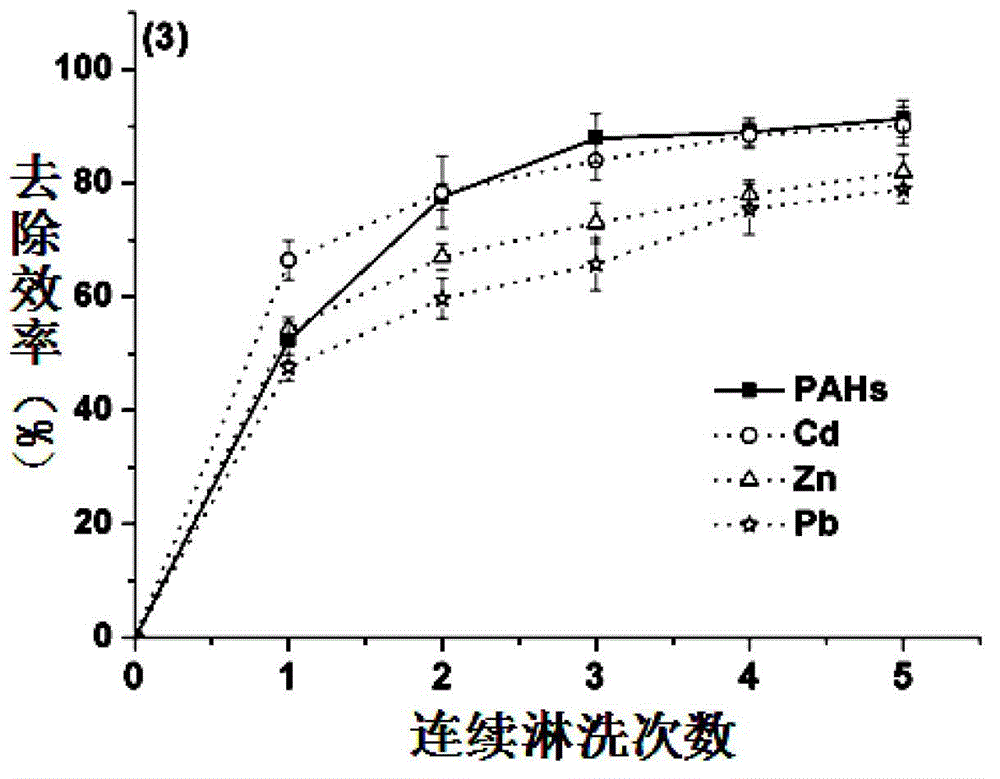Chemistry-microorganism combination restoration method of polycyclic aromatic hydrocarbons and heavy metal composite contaminated site soil
A technology of polycyclic aromatic hydrocarbons and complex pollution, applied in the field of soil remediation of contaminated sites, can solve the problems of lack of leaching technology, large environmental interference factors, long operation cycle, etc., and achieve the effect of high broad-spectrum, easy promotion, and simple operation
- Summary
- Abstract
- Description
- Claims
- Application Information
AI Technical Summary
Problems solved by technology
Method used
Image
Examples
Embodiment 1
[0024] The test soil was collected from the polluted site of a closed coking plant in the suburbs of Beijing. The soil samples were air-dried, the impurities were sorted out, and the soil samples were passed through a 10-mesh sieve for later use. The basic physical and chemical properties of the soil are pH 6.2, organic matter content 22.0 g / kg, total nitrogen 1.2 g / kg, available nitrogen 63.3 mg kg -1 , total phosphorus 0.43 g kg -1 , available phosphorus 78.7 mg kg -1 . The soil mechanical composition is 9.8% sand, 53.5% loam and 36.9% clay. The total polycyclic aromatic hydrocarbon content in the soil was 135.23 ± 7.74mg / kg. The contents of Cd, Ni, Zn, Cr and Pb are 11.74 ± 0.79, 135.23 ± 8.72, 236.03 ± 13.77, 310.32 ± 13.43 and 236.03 ± 9.84mg kg, respectively -1 . Before elution, air-dry the polluted soil and sieve it to remove unbreakable substances such as large-sized stones and plant roots in the soil, then pour the soil particles with a particle size of less tha...
Embodiment 2
[0028] The test soil was collected from a PAHs-contaminated site of a coking plant in a typical suburban area of Wuhu City, Anhui Province. The soil samples were air-dried, the impurities were sorted out, and the soil samples were passed through a 10-mesh sieve for later use. The basic physical and chemical properties of the soil are as follows: pH6.5, sand 8.7%, 59.2% silt, 32.1% clay, organic matter 18.0 g / kg, total nitrogen 1.5 g kg -1 , available nitrogen 57.6 mg kg -1 , total phosphorus 0.37 g kg -1 , available phosphorus 62.1 mg kg -1 . The total PAH content in the soil was 337.34±9.54 mg / kg. The soil is mainly polluted by three heavy metal elements: Cd, Zn, and Pb, the contents of which are 5.43 ± 0.29 mg / kg, 423.12 ± 3.43 mg / kg and 654.25 ± 41.36mg kg respectively -1 . Before elution, air-dry the polluted soil and sieve it to remove unbreakable substances such as large-sized stones and plant roots in the soil, then pour the soil particles with a particle size o...
PUM
 Login to View More
Login to View More Abstract
Description
Claims
Application Information
 Login to View More
Login to View More - R&D
- Intellectual Property
- Life Sciences
- Materials
- Tech Scout
- Unparalleled Data Quality
- Higher Quality Content
- 60% Fewer Hallucinations
Browse by: Latest US Patents, China's latest patents, Technical Efficacy Thesaurus, Application Domain, Technology Topic, Popular Technical Reports.
© 2025 PatSnap. All rights reserved.Legal|Privacy policy|Modern Slavery Act Transparency Statement|Sitemap|About US| Contact US: help@patsnap.com



